Ryan Hall's Blog, page 289
February 13, 2016
Photos: 2016 U.S. Olympic Trials Marathon
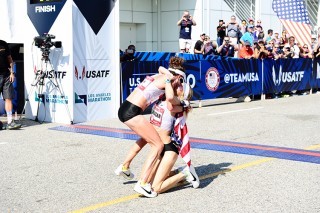
A hot day in Los Angeles had a big impact on U.S. Olympic Trials marathon competitors. In the end, Galen Rupp and Amy Cragg prevailed and won the race, with Meb Keflezighi, Jared Ward, Desiree Linden and Shalane Flanagan also securing Olympic bids.
RELATED: On to Rio! Galen Rupp, Amy Cragg Win U.S. Olympic Trials Marathon
Here are photos from the race, taken by Ryan Bethke, Brian Metzler and PhotoRun.net:
Photo Gallery
1 of {count}
Back to Start
View Larger Image
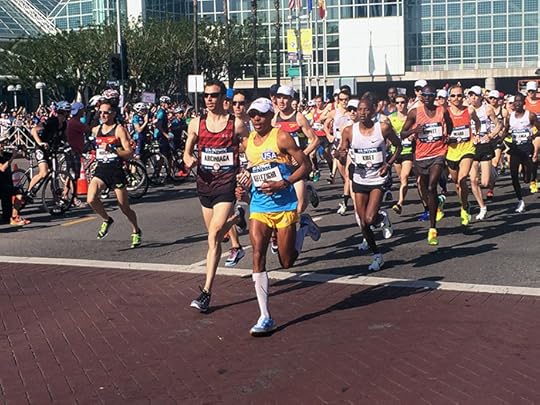
2016 U.S. Olympic Trials Marathon
Meb Keflezigihi and Nick Arciniaga were at the front at the start of the men's race. Photo: Brian Metzler
View Larger Image
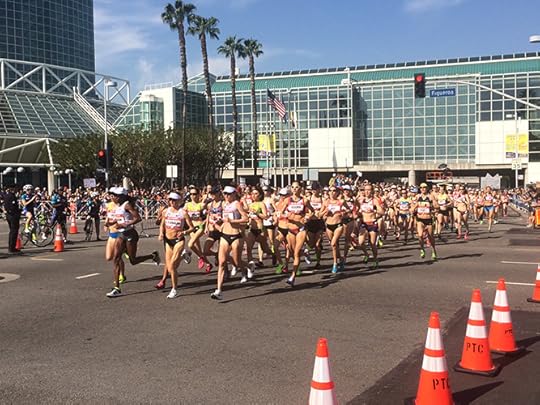
2016 U.S. Olympic Trials Marathon
The women's start. Photo: Brian Metzler
View Larger Image

2016 U.S. Olympic Trials Marathon
Photo: Ryan Bethke
View Larger Image

The lead women's pack early. Photo: PhotoRun.net
View Larger Image
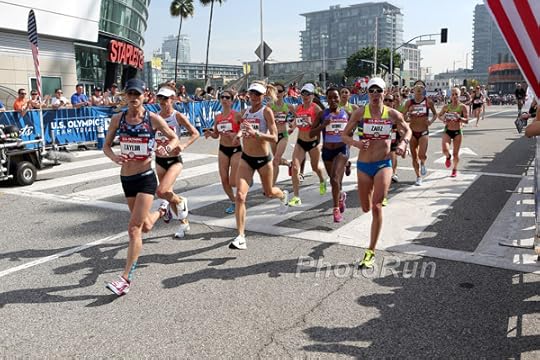
Photo: PhotoRun.net
View Larger Image
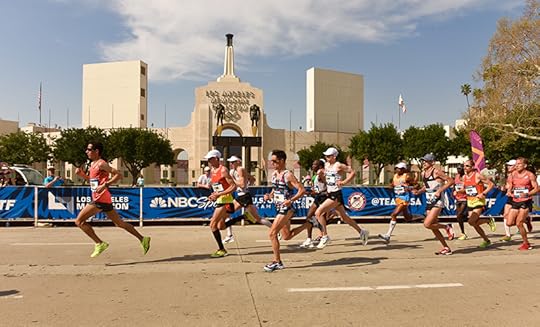
2016 U.S. Olympic Trials Marathon
The men passing the L.A. Coliseum. Photo: Ryan Bethke
View Larger Image
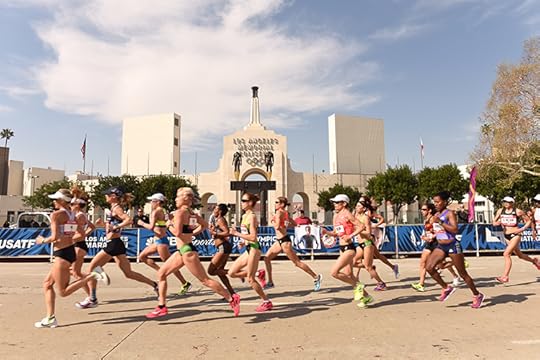
2016 U.S. Olympic Trials Marathon
The women passing the Los Angeles Coliseum. Photo: Ryan Bethke
View Larger Image
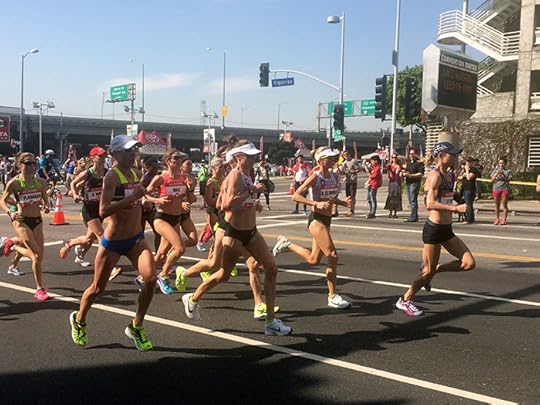
2016 U.S. Olympic Trials Marathon
A large pack of women ran together through the first 8 miles of the race. Photo: Brian Metzler
View Larger Image

2016 U.S. Olympic Trials Marathon
More than 20 men were bunched up in the lead group near mile 9. Photo: Brian Metzler
View Larger Image
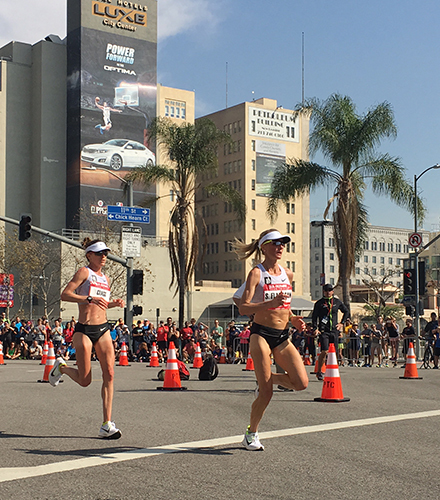
2016 U.S. Olympic Trials Marathon
Photo: Emily Polachek
View Larger Image
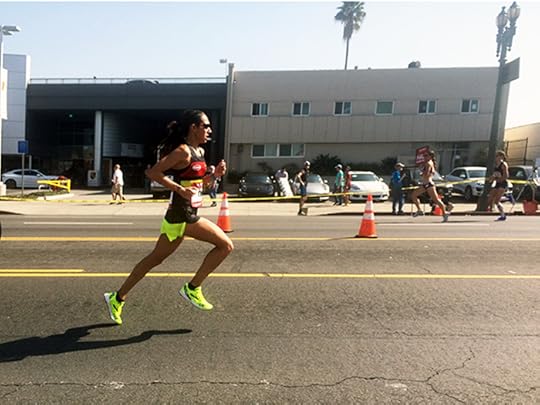
2016 U.S. Olympic Trials Marathon
Even though she said it was the hardest marathon she's ever run, Desi Linden looked stronger the longer the race went on. She wound up second in 2:28:54 to make her second Olympic team. Photo: Brian Metzler
View Larger Image
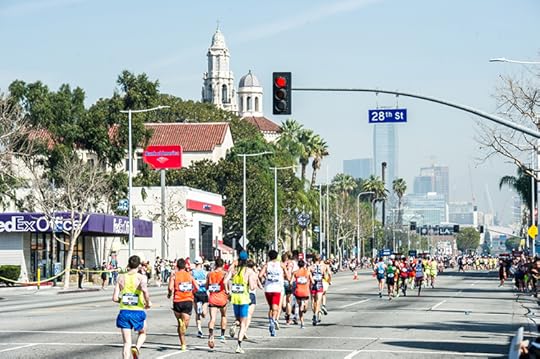
Photo: Ryan Bethke
View Larger Image
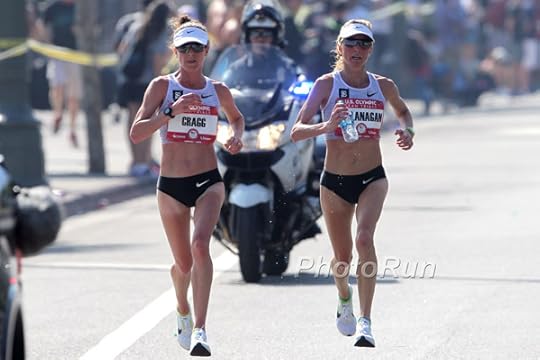
Photo: PhotoRun.net
View Larger Image
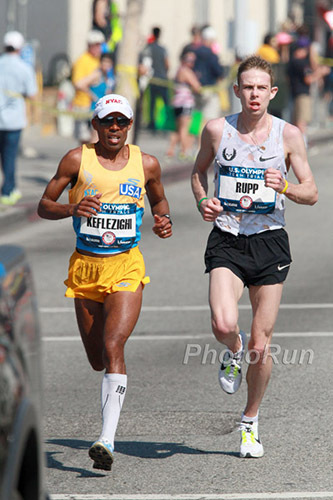
By mile 18, Meb Keflezighi and Galen Rupp had broken away. Photo: PhotoRun.net
View Larger Image
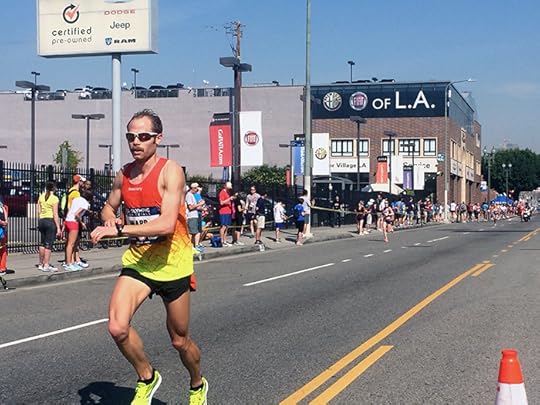
2016 U.S. Olympic Trials Marathon
Jared Ward was locked into third place when he clicked the lap split on his watch at mile 21. Photo: Brian Metzler
View Larger Image

Rupp Coliseum
Galen Rupp, running in front of the Los Angeles Coliseum during the final loop. Photo: Ryan Bethke
View Larger Image
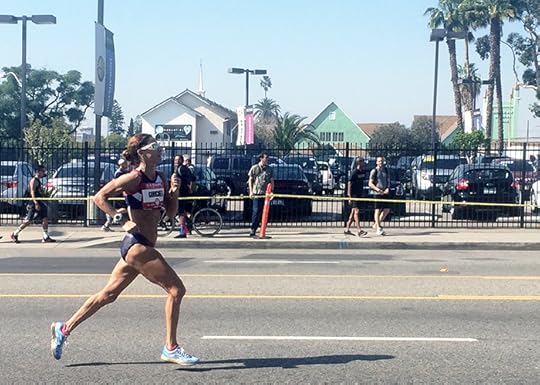
2016 U.S. Olympic Trials Marathon
Fourth-place finisher Kara Goucher (2:30:24) ran a strong second half, but she came up just short of making her third U.S. Olympic team.
View Larger Image
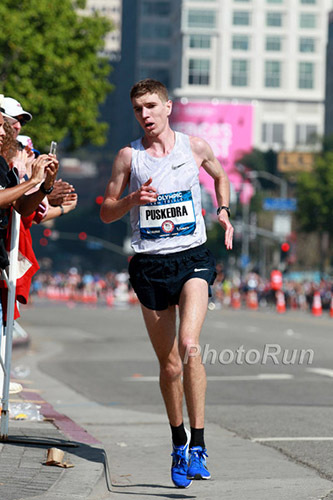
Luke Puskedra finished fourth in 2:14:12, narrowly missing the Olympic team. Photo: PhotoRun.net
View Larger Image
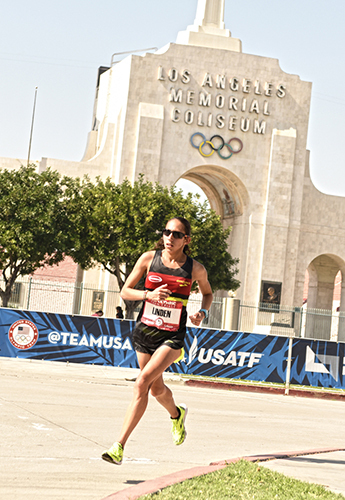
Desiree Linden in front of the Los Angeles Coliseum. Photo: Ryan Bethke
View Larger Image

2016 U.S. Olympic Trials Marathon
Galen Rupp won in dominating fashion, finishing in 2:11:12. Photo: Ryan Bethke
View Larger Image
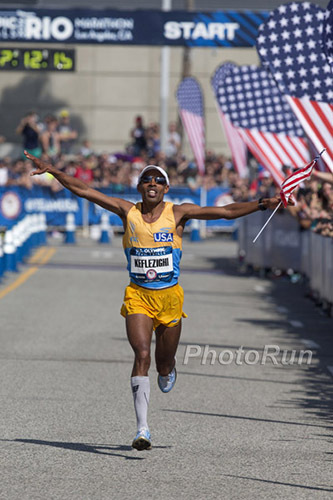
Photo: PhotoRun.net
View Larger Image

2016 U.S. Olympic Trials Marathon
Meb Keflezighi was thrilled with his second place finish and fourth Olympic team. Photo: Ryan Bethke.
View Larger Image
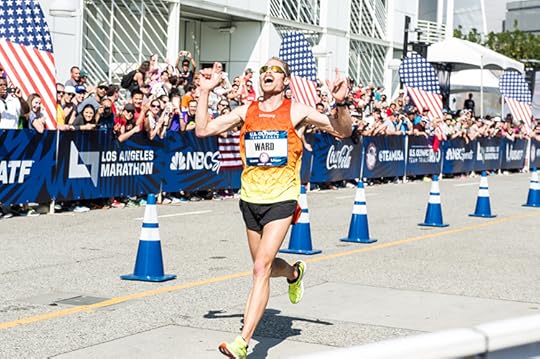
OlympicMarathonTrials2016 l(12 of 17)
Jared Ward was ecstatic about making his first Olympic team. Photo: Ryan Bethke.
View Larger Image

2016 U.S. Olympic Trials Marathon
Amy Cragg pulled away in the last mile to win in 2:28:20. Photo: Ryan Bethke
View Larger Image
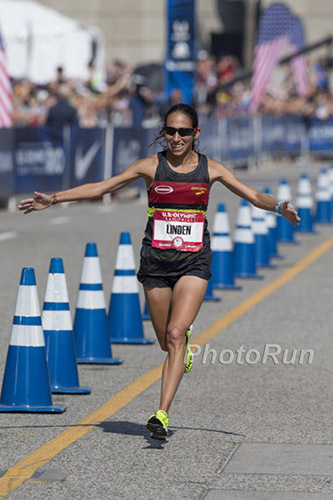
Desiree Linden had a strong finish to place second. Photo: PhotoRun.net
View Larger Image
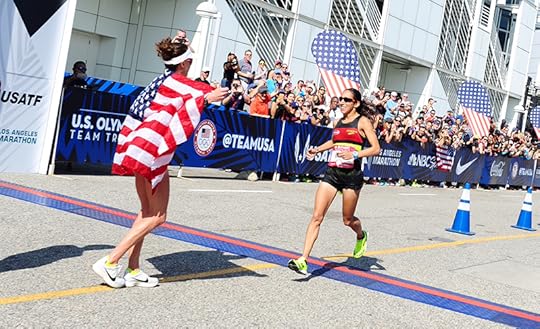
2016 U.S. Olympic Trials Marathon
Amy Cragg welcomes Desiree Linden at the finish line. Linden placed second in 2:28:54. Photo: Ryan Bethke
View Larger Image

2016 U.S. Olympic Trials Marathon
An exhausted Shalane Flanagan collapses into her teammate Cragg's arms after placing third in 2:29:19. Photo: Ryan Bethke.
View Larger Image
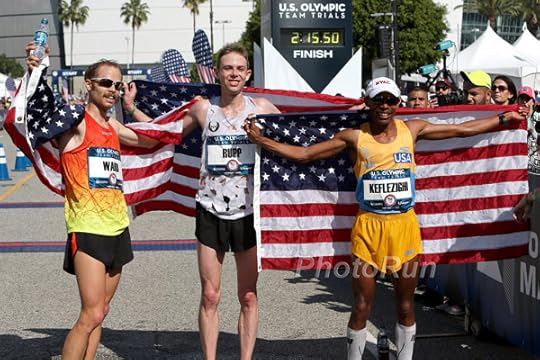
Photo: PhotoRun.net
View Larger Image

Photo: PhotoRun.net
View Larger Image
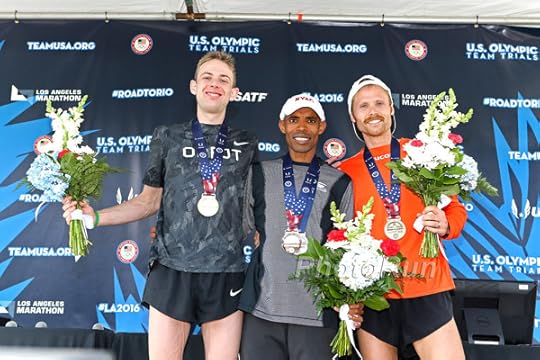
The men's podium: Galen Rupp (left), Meb Keflezighi, Jared Ward.
View Larger Image
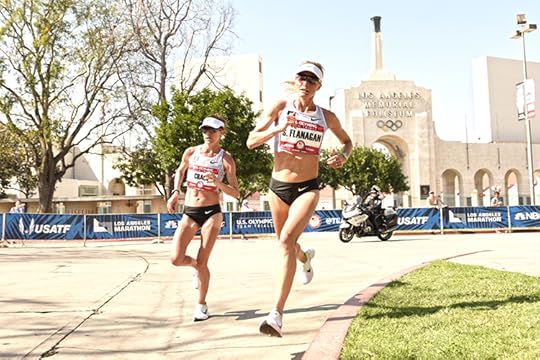
3JB_5124
Related Galleries
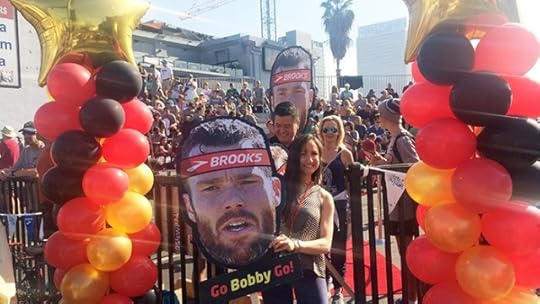
Photos: Scenes From the U.S. Olympic Trials Course

More Galleries
The post Photos: 2016 U.S. Olympic Trials Marathon appeared first on Competitor.com.
Photos: Scenes From the U.S. Olympic Trials Course
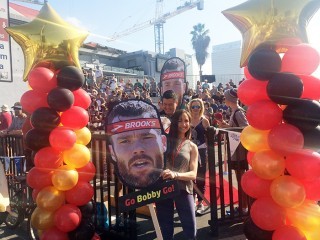
It was a festive day in downtown Los Angeles as thousands lined the streets for the U.S. Olympic Trials marathon. Here are some photos capturing the atmosphere surrounding the race.
RELATED: On to Rio! Galen Rupp, Amy Cragg Win Olympic Trials Marathon
Photo Gallery
1 of {count}
Back to Start
View Larger Image
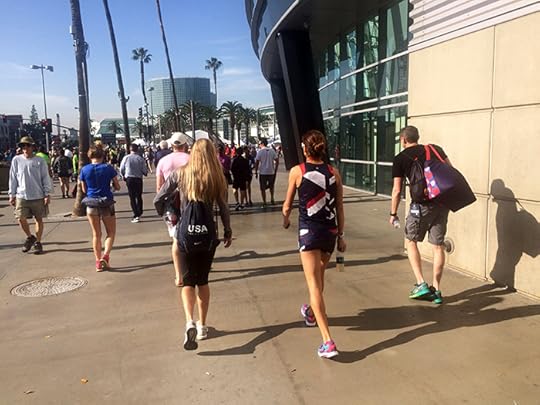
2016 U.S. Olympic Trials Marathon
As Kara Goucher (center) walked to the starting area with coach Heather Burroughs (left) and husband Adam Goucher, many fans offered words of encouragement. Photo: Brian Metzler
View Larger Image
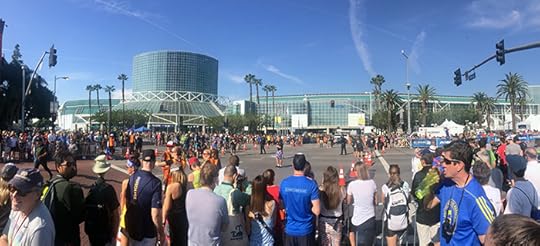
2016 U.S. Olympic Trials Marathon
Fans were everywhere near the intersection of Figueroa and Pico before the start of the races. Photo: Brian Metzler
View Larger Image
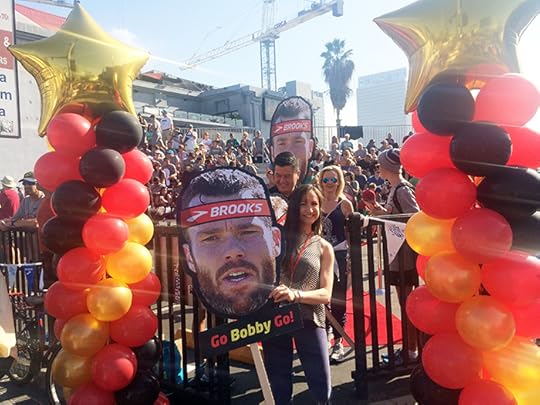
2016 U.S. Olympic Trials Marathon
Brooks rented out an entire parking lot to cheer on the Hansons Brooks team runners, including Bobby Curtis and Desi Linden. Photo: Brian Metzler
View Larger Image

2016 U.S. Olympic Trials Marathon
The men's lead pack runs under a giant inflatable rat at a car dealership near mile 8. Photo: Brian Metzler
View Larger Image
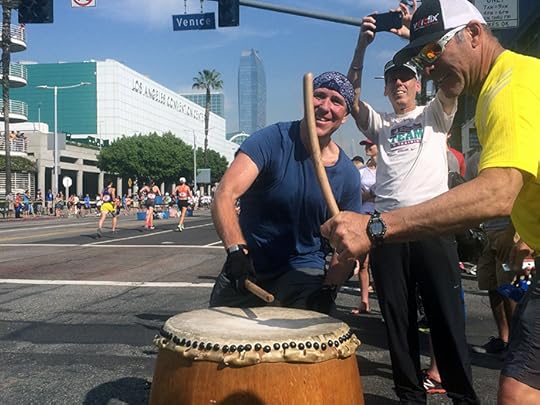
2016 U.S. Olympic Trials Marathon
Fans were all over the course, helping runners keep their rhythm. Photo: Brian Metzler
View Larger Image
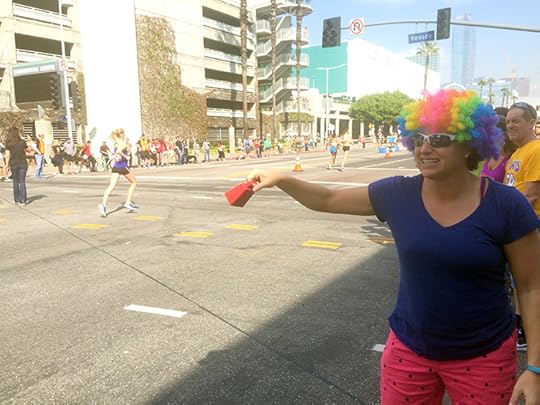
2016 U.S. Olympic Trials Marathon
Fans added plenty of color to the day of racing. Photo: Brian Metzler
View Larger Image
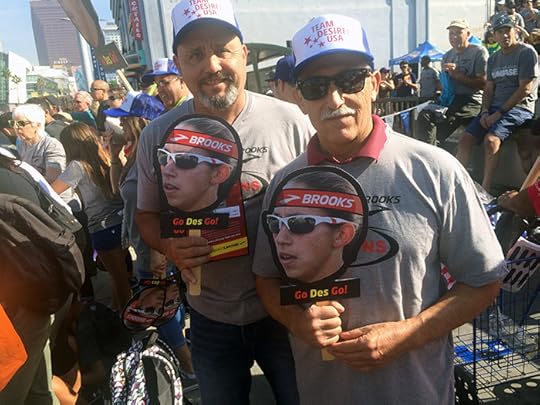
2016 U.S. Olympic Trials Marathon
That's Dennis Davila (right), proud father of Desi Linden, watching along Figueroa Street. Photo: Brian Metzler
View Larger Image
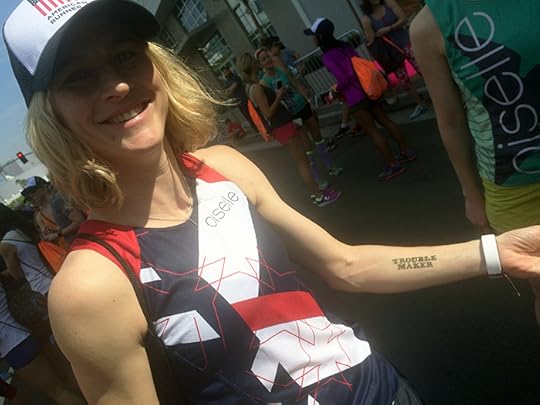
2016 U.S. Olympic Trials Marathon
Two-time U.S. 5,000-meter champion Lauren Fleshman got a temporary tattoo while hanging out with a flock of fans in the Oiselle cheering section. Photo: Brian Metzler
View Larger Image
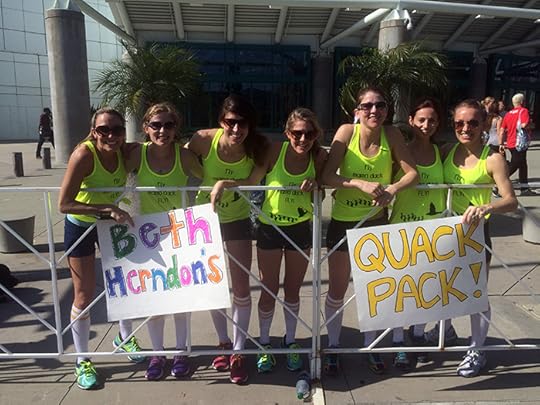
2016 U.S. Olympic Trials Marathon
Beth Herndon had a Quack Pack to cheer her on. Photo: Brian Metzler
View Larger Image
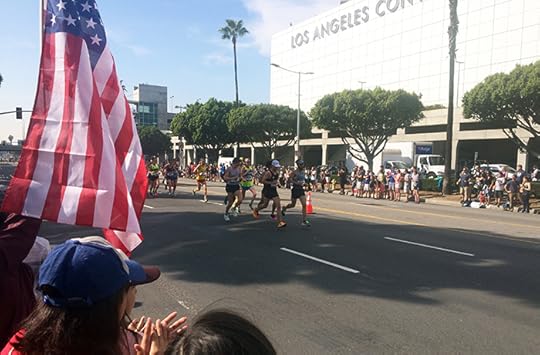
2016 U.S. Olympic Trials Marathon
There was plenty of flag waving and a sense of national pride out on the course. Photo: Brian Metzler
View Larger Image
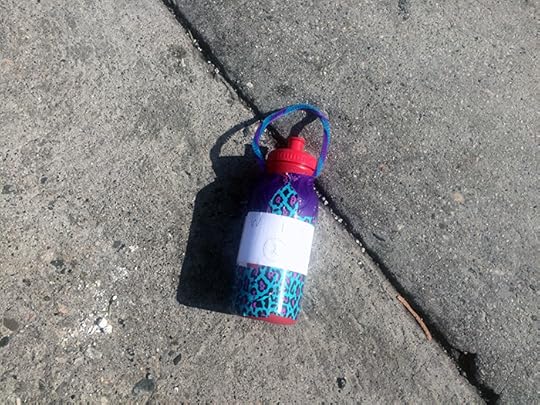
2016 U.S. Olympic Trials Marathon
A discarded bottle sits on the side of the course near mile 12. Photo: Brian Metzler
View Larger Image
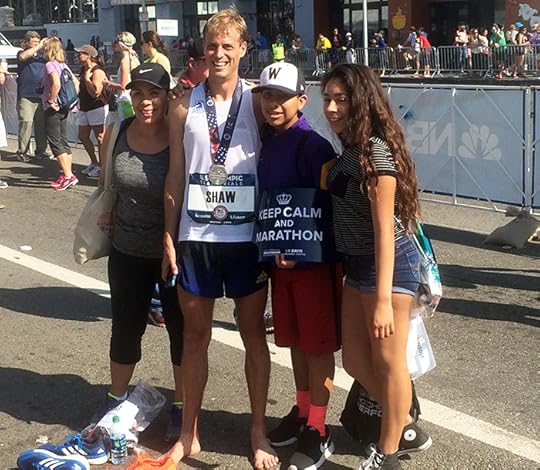
2016 U.S. Olympic Trials Marathon
Ethan Shaw takes a photo with supporters after the race. Shaw finished 21st in 2:20:56. Photo: Brian Metzler
View Larger Image

2016 U.S. Olympic Trials Marathon
Street vendors made a killing selling a variety of food, drinks and ice cream during the races. Photo: Brian Metzler
View Larger Image
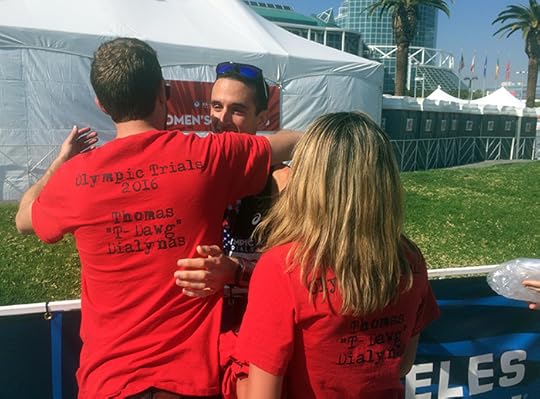
2016 U.S. Olympic Trials Marathon
Thomas Dialynas gets hugs from his crew after he finished 91st in 2:36:24. Photo: Brian Metzler
View Larger Image

2016 U.S. Olympic Trials Marathon
Kevin Havel tries to rehydrate on a curb after the race. Photo: Brian Metzler
View Larger Image
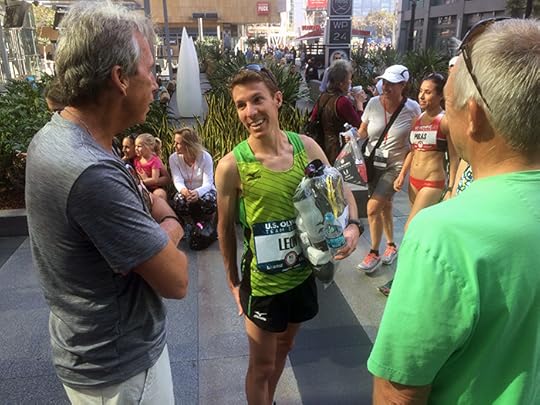
2016 U.S. Olympic Trials Marathon
Craig Leon catches up with friends and family after he placed 29th in 2:22:47. Photo: Brian Metzler
Related Galleries
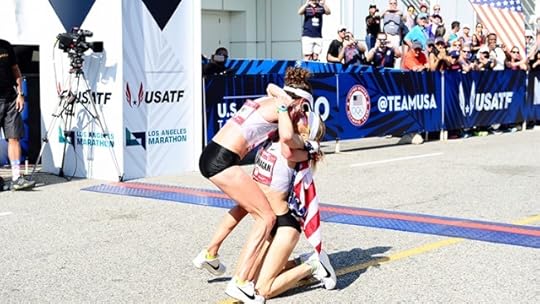
Photos: 2016 U.S. Olympic Trials Marathon

More Galleries
The post Photos: Scenes From the U.S. Olympic Trials Course appeared first on Competitor.com.
2016 U.S. Olympic Trials Marathon Top 10 Finishers
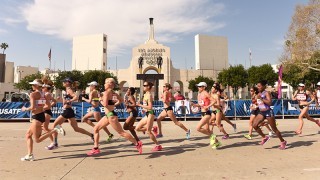
Photo: Ryan Bethke
Here’s how the top 10 men and women fared at the 2016 U.S. Olympic Trials Marathon.
RELATED: On to Rio! Rupp, Cragg Win U.S. Olympic Trials Marathon
MEN
1. Galen Rupp, 2:11:12, $80,000
2. Meb Keflezighi, 2:12:20, $65,000
3. Jared Ward, 2:13:00, $55,000
4. Luke Puskedra, 2:14:12, $25,000
5. Tyler Pennel, 2:14:57, $20,000
6. Matthew Llano, 2:15:16, $15,000
7. Shadrack Biwott, 2:15:23, $13,000
8. Patrick Smyth, 2:15:26, $11,000
9. Sean Quigley, 2:15:52, $9,000
10. Nick Arciniaga, 2:16:25, $7,000
WOMEN
1. Amy Cragg, 2:28:20, $80,000
2. Desiree Linden, 2:28:54, $65,000
3. Shalane Flanagan, 2:29:19, $55,000
4. Kara Goucher, 2:30:24, $25,000
5. Janet Bawcom, 2:31:14, $20,000
6. Kellyn Taylor, 2:32:50, $15,000
7. Maegan Krifchin, 2:33:28, $11,000
8. Serena Burla, 2:34:22, $11,000
9. Katja Goldring, 2:35:21, $9,000
10. Alia Gray, 2:35:47, $7,000
The post 2016 U.S. Olympic Trials Marathon Top 10 Finishers appeared first on Competitor.com.
On to Rio! Galen Rupp, Amy Cragg Win U.S. Olympic Trials Marathon
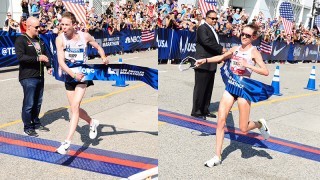
Photos: Ryan Bethke
LOS ANGELES — The 2016 U.S. Olympic team for the marathon is set.
Under warm conditions in downtown Los Angeles, six runners emerged at the U.S. Olympic Trials marathon and will represent the U.S. at the Olympic Games this summer. In the men’s race, Galen Rupp, Meb Keflezighi and Jared Ward got the cherished podium spots, while Amy Cragg, Desiree Linden and Shalane Flanagan finished 1-2-3 in the women’s race.
RELATED: Photos: 2016 Olympic Trials Marathon
Both races had impressive surges to spread out the field. Flanagan and Cragg took off at about mile 10 and broke away together, looking relaxed as they fed off each other and widened their lead. Their podium spots were theirs to lose after the half marathon split, though Flanagan struggled late and had to hang on. Linden, meanwhile, used the final 10K of the race to claw back into contention.
Cragg and Flanagan are training partners who did almost every workout together leading up to the Trials, including a training run at the Rock ‘n’ Roll San Antonio Half Marathon. It’s a partnership they’ve both cherished, and it was obvious throughout the race that they preferred staying together.
It wasn’t until Flanagan hit a wall at mile 25 that Cragg left her behind to take control of the race. Cragg won the race in 2:28:20. Linden ended up catching Flanagan in the final mile to finish second in 2:28:54, while an exhausted Flanagan finished third in 2:29:19, collapsing into Cragg’s arms at the finish line.
“Sweet baby Jesus I’m so thankful for her,” Flanagan said of Cragg after the race.
Kara Goucher finished fourth in 2:30:24, with Janet Bawcom (2:31:14) rounding out the top five.
RELATED: 2016 U.S. Olympic Trials Top 10 Finishers
On the men’s side, Keflezighi and Rupp surged ahead at about mile 18, breaking away from Tyler Pennell and taking control. Rupp further broke away from Keflezighi at mile 22, and showed the impressive speed that made him silver medalist in the 10,000m at the 2012 Olympics. He finished in 2:11:12, more than a minute ahead of anyone else. He crossed the finish line with a smile and a pump of the fist.
Keflezighi finished second, waving an American flag, in 2:12:20. Ward eventually caught Pennell and made his first Olympic team, crossing in 2:13:00. Luke Puskedra finished fourth, Pennell fifth.
While the Olympic team spots are the ultimate prize, there was also $600,000 passed out Saturday. Rupp and Cragg get $80,000 for winning, Keflezighi and Linden get $65,000 for second place and Ward and Flanagan will get $55,000 for third place. In all the top 10 places paid out.
The post On to Rio! Galen Rupp, Amy Cragg Win U.S. Olympic Trials Marathon appeared first on Competitor.com.
February 12, 2016
The Inside Lane: What’s Rupp Got To Do With It?
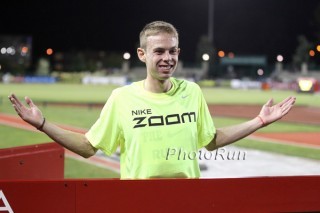
It remains to be seen how Galen Rupp's presence will affect the men's race on Saturday. Photo: PhotoRun.net
It’s arguably the highest profile debut in American marathoning history, and athletes, fans and casual observers alike are curious to see what effect Olympic 10,000m silver medalist Galen Rupp has on the men’s race at the U.S. Olympic Trials Marathon on Saturday–providing he still plans to take the starting line.
The 29-year-old Nike Oregon Project athlete hasn’t had any pre-race media availability in Los Angeles, but he has been spotted making his way through the lobby of the J.W. Marriott next to L.A. Live, just a block from the race’s start-finish line area. By all accounts, Rupp appears ready to race, but there’s been speculation as to whether or not he’ll be a last-minute scratch due to the less-than-ideal weather conditions forecasted for Saturday.
So why would Rupp, who announced his plans to participate in the Trials on Jan. 28 in an exclusive USATF.TV-produced interview, not race at the Trials? It mostly comes down to risk. Obviously, an Olympic berth is the grand prize at stake on Saturday, not to mention a fairly sizable payday for finishing in the top-three and potential sponsor bonuses, but there’s also a track season right around the corner (including the World Indoor Championships in Portland next month, which Rupp has said he’d like to run), and the Olympic Trials on the track later this summer. If both Rupp and coach Alberto Salazar feel racing a hard marathon on a twisting, mostly concrete course in dry 80-degree temps would compromise his track goals later in the year—Rupp said his main focus for 2016 remains the 10,000m—I think there’s an outside chance Team Rupp cuts its losses at the last minute and scratches in order to refocus on his track goals over the next few months.
But let’s say he doesn’t. What does Rupp’s participation do for the men’s race?
From a fan’s perspective, it brings the excitement meter up a notch on what was already shaping up to be an awesome event. “How will Rupp handle the marathon?” is a question many people can’t wait to see answered. For the other top contenders, it changes the dynamic of the race in a serious way. Rupp racing means there’s another viable—and most importantly, unpredictable—threat to keep a close eye on for a couple hours on Saturday. Despite this being Rupp’s first marathon, he’s got the tools and the resume to contend not only for one of the three spots on the team, but also for the win. That’s rare for a debutant, especially at such a high-profile event with an Olympic berth on the line. Rupp’s presence will force the other runners to think a little harder about how they’ll handle a slow, strategic race. It’s hard to know what other racers are thinking, but I’m quite confident that the last thing anyone fighting for a podium spot wants with a 26:44 10,000m runner in the mix is a 20-mile warmup with a 10K race at the end of it.
So how will the race will play out? That remains to be seen, but given the conditions, the course and the competition, I expect it to be a slugfest from the start, with an honest tempo and a fair amount of surges thrown in from the early going in order to separate the contenders from the pretenders. Rupp certainly won’t be the only runner the other athletes are thinking about as they run lap after lap under a blazing hot Southern California sun on Saturday, but the longer the pace lags, the better the chances he’ll have the legs to blitz the final 10K—and no one who thinks they have a shot at finishing in the top three will want anything to do with it.
The post The Inside Lane: What’s Rupp Got To Do With It? appeared first on Competitor.com.
Memorable Quotes From Top Athletes Before the U.S. Olympic Trials
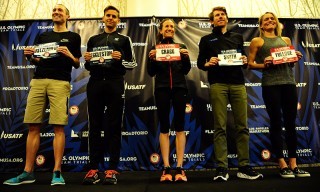
Photo: Ryan Bethke
Heading into the 2016 U.S. Olympic Trials Marathon, the energy in downtown Los Angeles is abuzz with elite runners and Olympic hopefuls. Back-to-back press conferences with the top men’s and women’s qualifiers have been occurring the couple days before race day on Feb.13, and the general consensus among the athletes we’ve spoken to is that they’re ready and feeling fit. Our staff has collected some of the more memorable quotes in the days leading up to race day from thoughts on how the weekend heat wave will affect the race outcome to individual athlete’s race day strategy.
Thoughts on weather and the course:
“With the heat, whether it’s going to make it more tactical or not, I don’t think anyone is going to try to run away early. But if they do you have to be ready for that. With that being said, it’s going to take a 2:08 effort.” -Luke Puskedra, 2:10:24 qualifying time.
“You know, I think time will be really hard to predict, especially with the heat. And even the course is a little slower in general with all the turns. It’s going to look pretty ugly.” -Annie Bersagel, 2:28:29.
“We’ve had some warm workouts, but nothing like this.” -Shalane Flanagan, 2:21:14.
On what it takes to make the team:
“It’s about closing well, it’s handling that last 10K and being able to finish a marathon and not really just hanging on and getting in.” -Desi Linden, 2:23:54
On running your best race:
“Honestly, the only marathon I got to run my way, was the (2014) Boston Marathon … The marathon definitely keeps you humble.” -Meb Keflezighi, 2:08:37
On training partners:
Within the top three qualifiers, Shalane Flanagan and Amy Cragg have been training together under Nike in Portland, Ore., and Flagstaff, Ariz., and both have a good chance of making the team.
“My training is always enhanced when I share it. Just having the comfort of her [Amy Cragg] next to me running will feel like we’re back in Portland or in Flagstaff doing what we know how to do. And I think having that synergy between us will allow us to stay calm and wait for the right moments to make the crucial decisions.” -Flanagan
“You run that much with someone [Flanagan] and you work so hard with that person and you see them working hard day in and day out. You become just as invested in them as you do yourself. We’re going to get out there and we’re going to work together as much as possible, and honestly just having her there will be a little bit of a comfort.” -Amy Cragg, 2:27:03
On tapering:
“As athletes, as runners, we’re a bit neurotic and we think more is always better, and you just have to trust that you have done enough.” -Flanagan
“And the taper tantrums are real.” -Flanagan
On motivation:
“I wouldn’t have come here if I didn’t feel like I had a chance to fight for it.” -Bersagel
“I’m tired of being the fourth place finisher in the Olympic Trials Marathon.” -Cragg
The post Memorable Quotes From Top Athletes Before the U.S. Olympic Trials appeared first on Competitor.com.
Chasing Rio, Part 3: Meb Arrives in L.A.
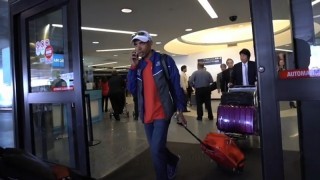
The third episode of “Chasing Rio: Meb’s Road to the 2016 U.S. Olympic Trials” presented by the Rock ‘n’ Roll Marathon Series follows Meb Keflezighi as he arrives in Los Angeles for the U.S. Olympic Trials marathon. We follow Meb as he goes for a quick run along the course, and also ask those in the running community about the impact Meb has made in the sport during his long career.
— Episode 2: Meb’s Support System
— Episode 1: Meb’s Quest for Rio
The post Chasing Rio, Part 3: Meb Arrives in L.A. appeared first on Competitor.com.
Full-Time Lawyer Annie Bersagel Has Sights on Rio From L.A.
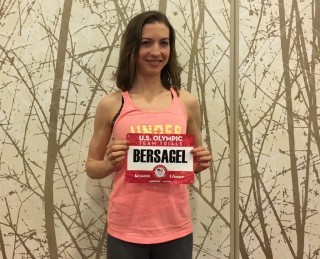
Annie Bersagel sporting her race bib for the Trials on Saturday, Feb.13 in Los Angeles, at a press meeting. Photo: Emily Polachek
Mentally, Annie Bersagel is prepared to toe the line this Saturday and be one of the three women to make the U.S Olympic marathon team headed to Rio de Janeiro. It’s all or nothing for the 32-year-old international lawyer who juggles a full-time job as an advisor for KLP Asset Management in Oslo, Norway, with putting in 130-mile weeks in her spare time.
“I wouldn’t have come here if I didn’t feel like I had a chance to fight for it,” she says confidently about making the team.
And she’s right. Bersagel’s running career has been on the rise ever since her first marathon of 2:44 in 2009, a respectable time that has progressed to a competitive 2:28:29 PR, which she set in winning the Dusseldorf Marathon in 2015. In between, Bersagel won the U.S. Marathon Championships in 2013 and took another victory with a 10-minute PR improvement at the Twin Cities Marathon that same year. She’s also one out of eight women in the Trials field with a sub-2:30 qualifying time. She’s got a shot.
RELATED: Excitement Mounts As Olympic Trials Marathon Fast Approaches
However, like every contender, Bersagel is wary of the physical elements she cannot control on race day. An unusually hot Los Angeles winter day with temperatures predicted to be in the 80s, and a course with multiple hairpin tight turns is not ideal for fast times.
“You know, I think time will be really hard to predict, especially with the heat,” she says. “And even the course is a little slower in general with all the turns. It’s going to look pretty ugly.”
Bersagel had knee surgery last June, and her recovery consisted of a lot of strength and stability exercises that she says she wouldn’t have done as much as before.
“This will be my first marathon since the surgery,” Bersagel says of her recovery. “But I feel I’m as fit as I’ve ever been. All I can do now is put myself in a position to make the top three and just hope that everything will cooperate.”
With a flexible work schedule (Bersagel says she’s been working at 60 percent and sometimes doing conference calls from home in her pajamas) she has been training mostly in her home state of Colorado the past couple months in preparation for the Trials.
You would think that the high mountain air provided some good altitude training, but unlike most of her fellow peers running at the Trials, Bersagel chose to train on a treadmill, especially after coming back from surgery. “I don’t want to take any chances and have my knee injury resurface,” she explains. During icy Oslo winters, she would also often do her long workouts on a treadmill or on the underground indoor track at Bislett Stadium.
Bersagel’s last attempt at making the Olympic marathon team did not fare well. At the 2012 Trials in Houston, she tripped in the first mile, pulled her hamstring and had to drop out of the race early. But this year, she’s looking for redemption.
Along with her agent, both her parents and brother will be supporting her along the course. And whether she does or does not make the team, she’ll be flying back to Norway the day after the race, arriving Monday and returning to a normal workday on Tuesday.
“I’m sure there will be a stack of papers waiting for me in the office when I get back,” she says. “I’ve been away a long time.”
RELATED: How to Watch the 2016 U.S. Olympic Trials Marathon on Feb. 13
The post Full-Time Lawyer Annie Bersagel Has Sights on Rio From L.A. appeared first on Competitor.com.
Why Should The Average American Runner Care About the U.S. Olympic Trials Marathon?
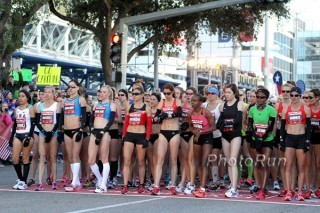
Photo: PhotoRun.net
This was an honest question that a friend and I discussed recently. We came up with a lot of answers, but we actually couldn’t come up with a good answer. That’s because the answer isn’t an easy one.
I consider myself a professional runner and I work hard every single day at being one, but it’s a situation made even harder when there’s little or no structure or support system for professionals to thrive. This is my third time competing in the U.S. Olympic Trials Marathon and it’s pretty obvious the sport of competitive running—especially the many disciplines of distance running—needs to change significantly for us to do a better job of marketing ourselves.
Without further ado, here is my proposal to make the U.S. Olympic Trials Marathon more appealing to everyone, including the elite runners ourselves.
RELATED: How to Watch the 2016 U.S. Olympic Trials Marathon on Feb. 13
1. Standardize uniforms.
There should be a standard color uniform associated with each company or sponsored team that agrees to “brand” as its own. People don’t associate with a brand’s identity or jersey color if they change every year. You don’t see other sports change its team jersey’s color year-after year. We need to create identity, not create confusion! Adidas-sponsored runners should have uniforms with its traditional royal blue/yellow; Nike could be purple; ASICS is red; Saucony is orange; Skechers is blue/green; Mizuno is yellow; New Balance is black/white; Newton is lime green with yellow; Oiselle is navy; Brooks is red/yellow/black; Hoka is white/baby blue/yellow; Tracksmith is peach and lavender. Or something like that.
2. Encourage hometown pride.
Make sure the right shoulder of a singlet is reserved for locational identity. There should be a national flag and a state flag. People LOVE to cheer for their home-towners! How awesome would it be to hear otherwise uninformed spectators identifying “the 10 guys from Colorado in the top 20.” It may even get people interested in approaching us and asking if all of us train together in our home state, sparking a conversation with us. (Don’t worry, we’re friendly!)
3. Run it during a major marathon.
I don’t mean the way we are doing it now with the Trials being run a day before the LA Marathon on a special criterium course. I mean we should run it with the race. Not only does this bring in a bigger crowd, it also brings down the LOC’s cost to host the event. They can replace, once every four years, the international field with an American-only invited field. The roads will already be closed, the police getting paid, the prize money up for grabs, and the infrastructure in place. Let’s let the LOC off the hook for footing the bill, USATF!
4. Broadcast, webcast and live Tweet updates in real-time!
Our sport still runs its media program like it’s 1896. The modes of broadcast have evolved a long way since the rules of track and field were written; the business model hasn’t changed. We have a product to sell and both passionate fans and casual fans who are interested in watching races, if we can make it easy for them to see it. This is a sport with PhDs, neuroscience majors, nuclear engineers, teachers, and other interesting and intelligent people. We can turn the athletes’ life stories into relatable stories.
On that note, don’t cut out video coverage every time a break is being made! Place commercials heavier in the earlier part of the broadcast and have scrolling sponsor marquees the second half of the race. Verbally mention sponsors more and cut away less from the action. You can even sell sponsorship in blocks: “miles 1-6 brought to you by …”
5. Allow more viable business models to the athletes.
We are often most dependent on our local sponsors to survive on a day-to-day basis. When we can’t represent them in our biggest stage, there is a diminished value to them sponsoring us.(We are currently restricted to two logos of 30 square cm each for advertisement on or jerseys.) For example, if I’m sponsored by Lou Malnati’s Pizza in Chicago, how exactly does that logo on my jersey diminish Nike’s banner ads every mile marker? You just may get all 35 Lou’s restaurants in the Chicago vicinity to broadcast the trials in-house and have regional viewing parties with local runners, high school teams and general fans packing those places to cheer on regional runners and national stars. Wouldn’t that be a great new way to generate interest in distance running?
I can understand why most people have no interest in the U.S. Olympic Trials as it currently stands. We’re a tribal society and we don’t show who our tribes are! Can you imagine other sports without geographic followings, brand identities, human-interest stories, and local promotion? They wouldn’t make it either. Would you care about football the same if you couldn’t watch games live, didn’t know where teams were from and you knew the final scores before you ever saw the highlights-only coverage? It would certainly be harder to pour your heart into it.
Why should you care about the upcoming U.S. Olympic Trials Marathon? Because these are the best runners in America, going all-out for a chance to represent the U.S. in this summer’s Olympics. Because this is going to be an era of change in American distance running and you don’t want to miss it. We have ideas and it’s up to us to implement them so this becomes a question of the past.
Recently signed as a Skechers Performance athlete, Patrick Rizzo, 32, is a three-time U.S. Olympic Trials Marathon qualifier from Colorado Springs. He placed 13th in the 2012 U.S. Olympic Trials Marathon in Houston in 2:13:42, which is his PR.
The post Why Should The Average American Runner Care About the U.S. Olympic Trials Marathon? appeared first on Competitor.com.
Video: How Are the Race Tactics Different at the U.S. Olympic Trials Marathon?
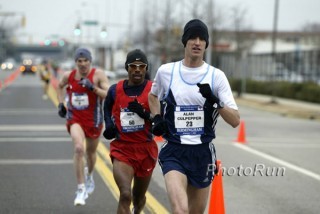
Photo: PhotoRun.net
The dynamic of the U.S. Olympic Trials marathon are different from any other race—the quest to make the top three, the sheer number of elites and more can completely change the strategy of the runners. We asked Alan Culpepper, the 2004 U.S. Olympic Trials champion, about how the approach of the runners differ in such a different race.
The post Video: How Are the Race Tactics Different at the U.S. Olympic Trials Marathon? appeared first on Competitor.com.
Ryan Hall's Blog
- Ryan Hall's profile
- 21 followers



